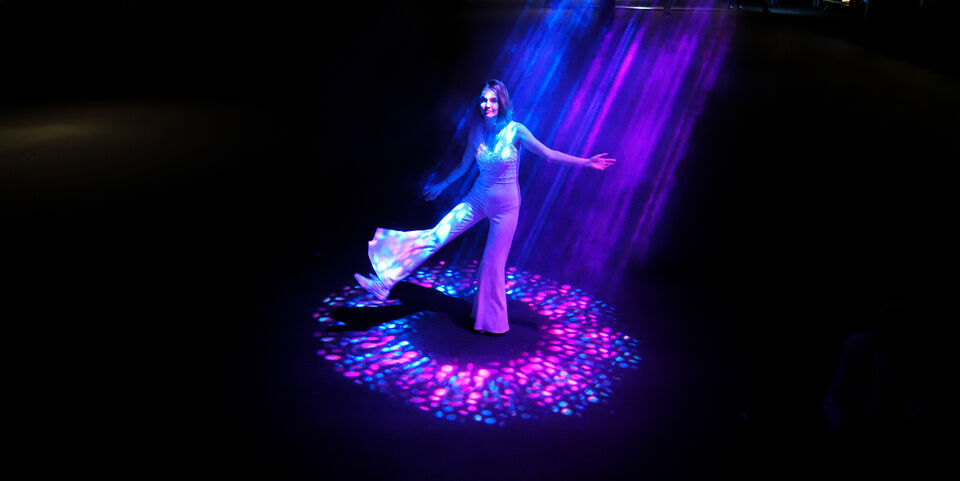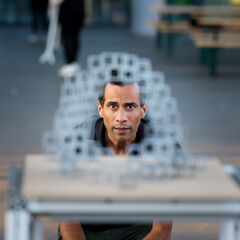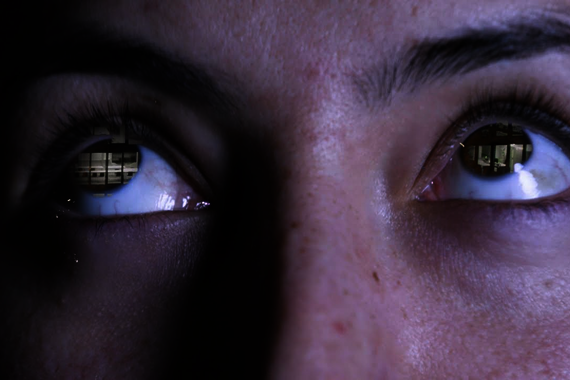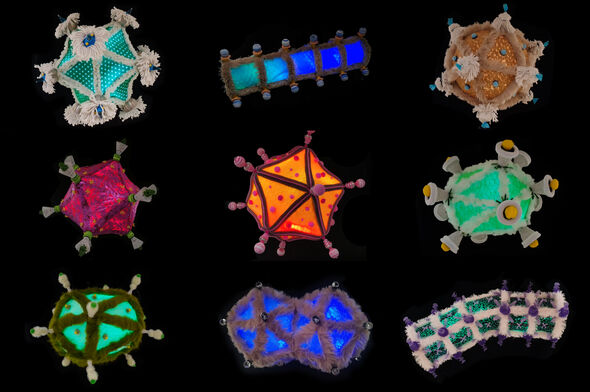GLOW 2021: follow the eye of Atlas
After a ‘dark’ 2020, this year’s edition of GLOW will once again be awaited with tension due to corona. How will the Eindhoven light art festival be impacted by the latest measures? Philip Ross, project leader of the TU/e part of GLOW, has no option but to wait and see. “And calmly continue with the construction activities, because the festival starts next Saturday.” In the past year, 260 students and dozens of assistants and external parties worked on ten light installations that will interact with the public on the TU/e campus.
TU/e contributes to each edition of GLOW with a number of light installations, but it welcomes the public to its campus exclusively during lustrum years. This year, during which the university celebrates its 65th anniversary, it’s that time again. In the past, GLOW had a fixed route through the city along the light artworks, but this year’s edition has four separate festival locations. One of these so-called ‘hotspots,’ is the TU/e campus.
GLOW 2021 takes place between 6 and 13 November. The campus will have ten light installations in total: eight made by TU/e teams, one by Fontys and one by Studio Toer. In his capacity as project leader of TU/e’s contribution, Philip Ross is responsible for both the creative concept and the production in its entirety.
Ross is not unfamiliar with the university: he obtained his doctoral degree at TU/e and worked there as a teacher. Today, he has his own light design studio. “But I’ve been involved with the TU/e projects during each edition of GLOW, in close collaboration with the Intelligent Lighting Institute, or ILI.”
Rutte
Last Tuesday’s press conference with Prime Minister Mark Rutte and Minister Hugo de Jonge – four days before the start of GLOW – added a serious dose of uncertainty to the anxiety that comes with the run-up to a large event. “The organizers of GLOW are currently consulting with the municipality to determine how the latest measures will impact the festival,” Ross says.
Until there is more clarity, construction activities continue according to plan. Ross started with the construction of the installations for GLOW on the campus a year ago already, together with a project group of researchers and students. They devised the concept, made preliminary rough drafts, looked for enthusiastic participants, and created courses during which students were able to design light installations. “The GLOW Academy, where light artists who had previously taken part in GLOW could share their knowledge with students, was special as well.”
Transformation
The concept – a feature shared by all installations on the TU/e campus – has been dubbed Transformation by Light, Ross says. “We want to show how light puts things in motion and brings about change. The research activities at TU/e shows the many ways in which that can be done: light influences our well-being, it directs our movements through our environment, and it determines how we experience public spaces.”
“But light can also be converted into energy, as in the GEM-stage. And researchers of the new Hendrik Casimir Institute use light for 3D environment modelling – a technology that is used in self-driving cars, for example. This is the kind of research that inspired us.”
Eye of Atlas
The transformative power of light technology comes from two factors that reinforce one another, Ross says. “On the one hand, the dynamics of LED lighting: the many colors, the fast response time and the small format that makes it so much easier to incorporate it – you no longer need to ‘design your way around that light bulb.’” On the other hand, the back-end ICT technology is in constant development: think of software, computer power, algorithms and sensors.
These two things combined make it possible to design installations that aren’t just beautiful to look at, but that interact with the public as well, such as Ballroom (see main photo). Eye of Atlas is another example. This installation, in which the Atlas building plays a key role, was designed by Ross himself. For the idea of his installation, Ross travelled back to the days of the mythological figure of Atlas: ancient Greece.
Unique
Philosopher Empedocles was fascinated by human sight: how do we see? According to his theory, our eyes emit light with which we ‘touch’ the objects around us and, consequently, makes these objects visible. And that’s exactly what the ‘eye’ of Atlas will do, Ross says. The building will ‘look at its surroundings’ with a glance of light and continuously ‘touch’ different objects on the Green Strip, which will light up and become visible. “This way, Atlas also invites the public: ‘look over there, and there.’”
What makes this installation unique – and very challenging from a technological perspective – is the fact that the lighting system in the Atlas building and the lighting systems outside work together: when the light in Atlas ‘looks’ at a location or an object outside, the light will turn on there. “No fewer than ten computer science students worked on the programming.”
Silent disco
In conclusion, Ross would like to say that all of TU/e’s study associations will be hosting an evening during GLOW in the areas around the GEM-stage and on the KOE-veld. Drinks will be served, and the associations will organize side programs as they see fit. “Think of interesting talks and presentations of experiments with light, but also of a silent disco.”
SSRE ceiling aglow with harmless new mutations
The GLOW route will run through SSRE’s home at the Vestdijk this year. Here, the public will be able to see creations made by SSRE members in TU/e alumnus Har Hollands’ workshop over the past six months. Together with light architect Hollands, they designed thirty harmless new coronavirus mutations.
Sterre ten Velde, co-initiator of this GLOW project ‘New mutations’ and SSRE board member, explains why: “We students wanted to put a positive spin on the negative news about corona. The virus is an ugly phenomenon, but when you zoom in on it from a microbiological angle, you see all kinds of very beautiful and special shapes. We depicted these shapes with everyday objects, such as toilet brushes, badminton shuttles and floor mops, combined with beautiful fabrics. We’ve built a metal structure that holds everything together, and it was a fun project all in all.”
And the party hasn’t even started yet. Upon entry with a QR code, visitors will see mutations that move around “like living viruses.” The bar will serve cold beer, as well as hot drinks and simple snacks. Ten Velde finds it difficult to estimate the number of expected visitors during the GLOW week. “The previous edition welcomed 770,000 visitors. I’m very curious to find out how many visitors we will get to welcome.” The crowd can continue along the route via the rear exit.





Discussion